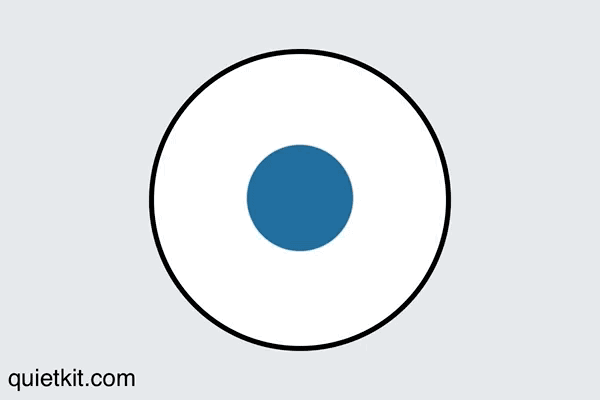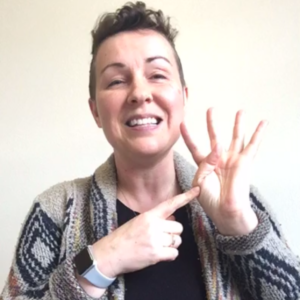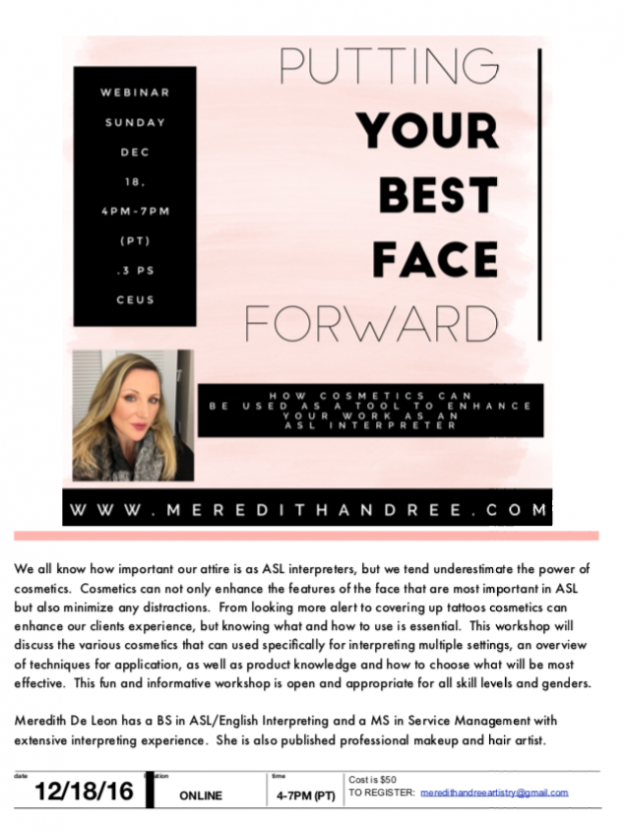Where do you hold tension and stress in your body, and what do you do to relieve it?

Photo by Aarón Blanco Tejedor on Unsplash
Whether you’re in wildfire land, hurricane territory, or somewhere in between, you’re likely feeling tension and stress in your body.
Tension is energy trapped in the body.
Potential movement that, on its way somewhere else, got stuck. Tension signifies the places in our bodies where we’re resisting reality internally, but not yet moving to act in a helpful, empowering way externally.
Internal resistance opposing external stagnancy can create a fixed mindset, sense of disempowerment, and bodily discomfort. It often feels like we’re gripping something tightly.
Stress-Relief for Interpreters: Move the Body, Free the Energy
Movement can be a powerful tool for healing, when we’re suffering from tension and stress.
This can look like: shaking – parts or all of your body – gently or vigorously, bouncing, dancing, stretching, massaging, scraping, pleasuring, flexing, and so much more.
In order to tend to our tension, we must first know it’s there. Developing mindful awareness in your daily life can help you to become more responsive to your body’s cues so that these spots don’t stay stagnant for so long.
Breathing is an accessible and easy way to bring gentle movement into areas of tension. Here’s one quick and powerful way to do it, even while interpreting.
Check out the video at the end of this post where I walk you through the process.
Triage Care: The 4×4 One-Breath Body Scan
This practice is a combination of two techniques. Let’s look at each separately first.
Part 1: Square, Box, or 4×4 Breathing
This breathing technique has many names, because it’s just that good. And it’s super-simple. 
- Inhale through your nose for a count of 4.
- Hold that breath for a count of 4.
- Exhale through your nose or mouth for a count of 4.
- Hold empty for a count of 4.
That’s it.
Practice this a few times, syncing your breathing pattern with the visual, and you’ve got it. As a side note, notice how your body feels after a few cycles of this breath.
Part 2: Body Scan
Typically the body scan is taught as a longer relaxation experience – and it’s fantastic as that. When my kids were little, they would ask me to guide them through this as they prepared for sleep. A good body scan can take 10 minutes+ to go through, and can leave you feeling as soft as warm putty when you’re done. It goes like this:
- Get centered and grounded. Feel your connection to the surface beneath you. Feel it holding and supporting you.
- Bring your awareness to the top of your head, feel your scalp, forehead, face, jaw, ears, and back of head. Notice any area of tension and let it relax. Don’t force, just allow.
- Slowly move your awareness down your body to each part, one after the other – noticing any tension and allowing it to release – until you get to your toes.
This practice can take as long as you want it to. It’s especially good during a long break or just before bed. But sometimes we need more frequent and short ways to care for ourselves.
Here’s where the triage care magic is: put them together.
- While inhaling through your nose for a count of 4, let your awareness scan your body for areas of tension. As you practice this, the breathing + scanning becomes more automatic – it might feel clunky at first. That’s ok. Over time you’ll get to know the areas where you hold your tension, so you can hone in on them more quickly and easily. When you find those areas of tension, start directing your breath right into them, like a funnel. Find the center of the tension and imagine that you’re filling it like a balloon with healing, supportive oxygen.
- Hold that breath, letting the oxygen do its work in each area of tension, for a count of 4.
- As you exhale through your nose or mouth for a count of 4, allow each balloon to deflate, carrying with it the tension that was stored in that muscle.
- Hold empty for a count of 4, focusing on the relaxation of each spot.
If you take 4 seconds with each part of the breath, this has taken you 16 seconds.
Can you take 16 seconds to care for yourself a few times today?

Burnout Proof Academy Saturday School Workshops are coming!
Registration is open for Self-Care for Stressful Times!
Join us live for the two-hour workshop on October 24th, 2020 from 10:00 am – noon pacific, or watch the recording and connect with others in our online portal anytime after, for 0.2 GS CEUs.
We’ll use the Learning Zone Model to illustrate how our brains respond to stress, talk about how to create practices of rest and comfort during stress, and how to grow even during stressful times.
The Secret to Triage Care
Triage care isn’t helpful if you don’t practice it. This is where your habit-solidifying skill comes in! BJ Fogg, habit-creation researcher and founder of Tiny Habits, teaches a simple three-part approach to making healthy habits more automatic:
- Make your new habit tiny – 30 seconds or less. Our 16 second one-breath body scan fits the bill!
- Anchor it to an existing habit – brainstorm some current habits or things you do daily automatically. For example: turning off the morning alarm, hitting ‘start’ on the coffee maker or teapot, using the restroom, washing your hands, turning on the computer, listening to the phone ring on a VRS call, waiting for a consumer, sitting on hold, brushing your teeth, or pulling up the covers at night. There are a million more. Pick one and use it as a trigger to remind you to do your one-breath body scan. For example: When I push the button to turn on my computer, I do my one-breath body scan.
- Celebrate – just like clicker-training a puppy, every time you complete your tiny habit – celebrate! This gives you a cascade of feel-good hormones that rewards your brain and brings you joy, making it more likely that you’ll remember and be willing to practice your habit again.
 Here’s three resources for practicing triage care and solidifying your new habit:
Here’s three resources for practicing triage care and solidifying your new habit:
- This is not business as usual | Self-Care Strategies for Interpreting During a Pandemic
- Make Time for You – online self-paced course to help you build your self-care habit 5 minutes a day. 0.3 CEUs.
- Put On Your Raincoat: Energetic Protection for Sign Language Interpreters – online self-paced workshop worth 0.5 CEUs – includes a 7-day mindfulness practice.
This video guides you through the whole triage care process.
Join us in The Burnout Proof Interpreters Collective Facebook group to catch future livestreams!
I’d love to know:
In what areas of your body do you hold tension, and what helps you to soothe it?
The equitable world we are creating begins with treating ourselves well. Thanks so much for being here with me, on this journey to taking better care of your precious self.






 In many cities here in the U.S., the coronavirus pandemic is beginning to get more real. For my family in Portland, Oregon, the biggest effects so far have been:
In many cities here in the U.S., the coronavirus pandemic is beginning to get more real. For my family in Portland, Oregon, the biggest effects so far have been:











